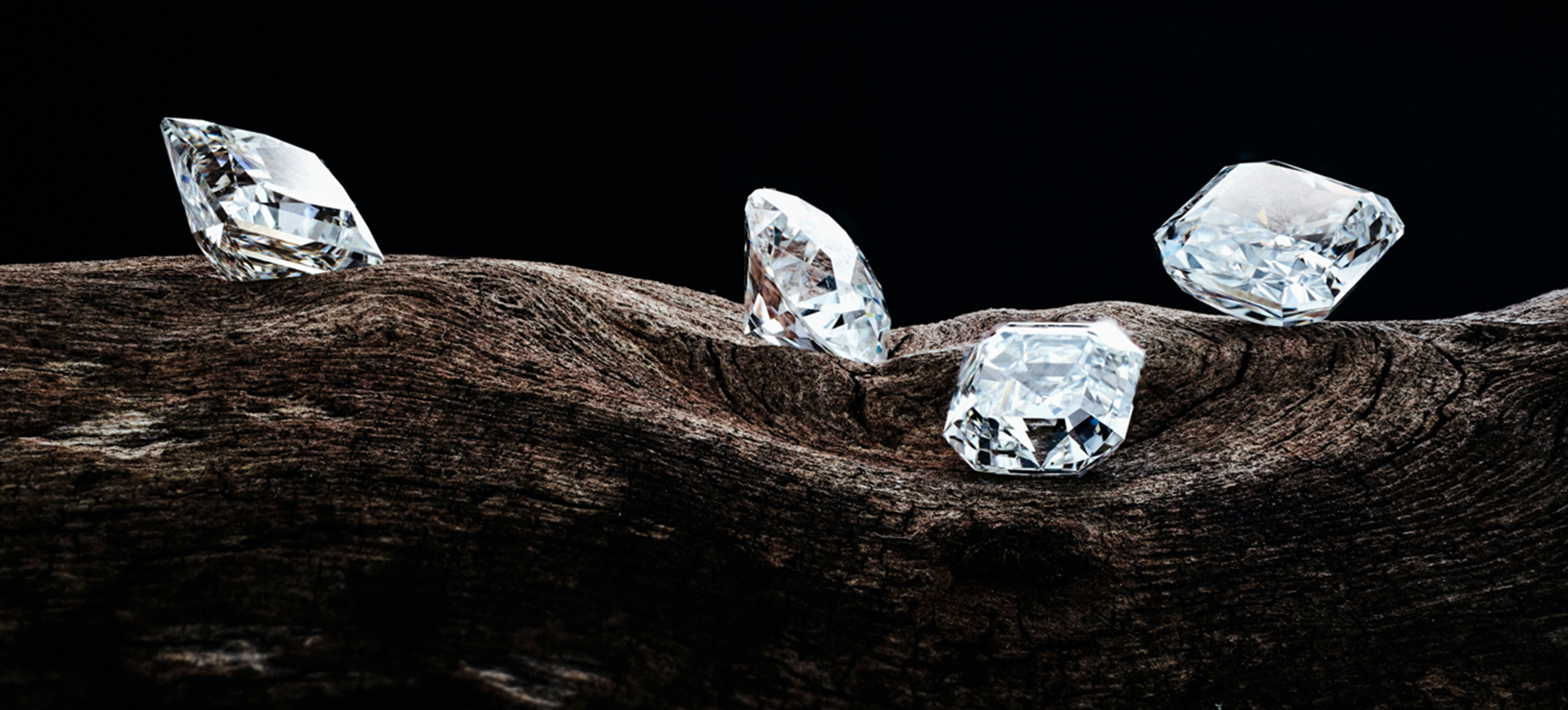What is Moissanite?
Before discussing moissanite disadvantages, it’s important to understand what moissanite is. Moissanite is a silicon carbide crystal first discovered French chemist Henri Moissan in 1893. Initially thought to be diamond, it was later identified as a different mineral. Today, moissanite is produced in laboratories and is known for its brilliance, fire, and affordability when compared to natural diamonds. However, these benefits are often outweighed several moissanite disadvantages when compared to man-made diamonds.
Moissanite Disadvantages: Lack of Authenticity
One of the most significant moissanite disadvantages is that it is not a real diamond. For many people, the authenticity of a gemstone is essential, particularly for engagement rings or significant life events. Unlike man-made diamonds, which are chemically and physically identical to natural diamonds, moissanite is a different material entirely. This lack of authenticity can be a dealbreaker for some, especially for those who prioritize owning something that closely mimics a natural diamond. Therefore, man-made diamonds offer a more authentic alternative without the hefty price tag of natural diamonds.
Moissanite Disadvantages: Excessive Brilliance
Another key factor contributing to moissanite disadvantages is its excessive brilliance. Moissanite has a refractive index of 2.65 to 2.69, which means it reflects more light than a diamond. While this might sound appealing at first, the result is that moissanite can appear overly sparkly or “too good to be true.” For many buyers, the excessive sparkle of moissanite can make it look artificial and less sophisticated than man-made diamonds. In contrast, man-made diamonds have a more subtle sparkle that closely mimics the fire and brilliance of natural diamonds, making them more desirable for those seeking an elegant, classic look.
Moissanite Disadvantages: Durability Concerns
Durability is another area where moissanite disadvantages become apparent when compared to man-made diamonds. Although moissanite is relatively hard, scoring 9.25 on the Mohs scale of hardness, it falls short of diamonds, which score a perfect 10. While moissanite is durable enough for everyday wear, it is more prone to scratching and wear over time compared to man-made diamonds. Man-made diamonds, being identical to natural diamonds, offer unmatched durability, making them a better long-term investment for those looking for an enduring gemstone. This is one of the most significant moissanite disadvantages for individuals prioritizing durability.
Moissanite Disadvantages: Color Tinting
Moissanite can also exhibit a subtle color tint under certain lighting conditions, which is another of its key disadvantages. While marketed as colorless, many moissanites have a yellow or gray tint when viewed in natural light, especially in larger stones. This is one of the most noticeable moissanite disadvantages when comparing it to man made diamonds, which can be created in a variety of colors, including perfect colorless options. For consumers seeking a clear, white gemstone, man-made diamonds often provide a more consistent appearance without any unwanted tints.
Moissanite Disadvantages: Poor Resale Value
Resale value is another major factor contributing to moissanite disadvantages. Unlike man-made diamonds, which hold their value better due to their chemical similarity to natural diamonds, moissanite has a significantly lower resale value. Most jewelers and resale markets do not value moissanite the same way they do diamonds, meaning that if you ever choose to sell your moissanite jewelry, you might receive only a fraction of what you paid. In contrast, man-made diamonds retain a higher portion of their initial value, making them a more secure investment in the long run. This is a crucial aspect to consider when weighing moissanite disadvantages against man-made diamonds.
Moissanite Disadvantages: Limited Options for Certification
Another of the moissanite disadvantages is the limited availability of certification and grading. While man-made diamonds are graded and certified renowned gemological institutions like the GIA (Gemological Institute of America) or IGI (International Gemological Institute), moissanite does not typically undergo the same rigorous grading process. This lack of certification can make it difficult for buyers to accurately assess the quality of a moissanite gemstone, leading to uncertainty. For individuals who value transparency and want assurance regarding the quality of their purchase, man-made diamonds provide a better option. This is another important point when considering the moissanite disadvantages.
Moissanite Disadvantages: Limited Market Appeal
Moissanite’s limited market appeal is one of its final disadvantages when compared to man-made diamonds. Despite its affordability and brilliance, moissanite has not achieved the same level of mainstream acceptance as man-made diamonds. The perception that moissanite is a “diamond substitute” rather than a true gem contributes to its lower demand. Man-made diamonds, on the other hand, have gained significant traction in recent years, with more people appreciating their sustainability, ethical production, and identical properties to natural diamonds. This makes moissanite less appealing to those seeking a gemstone that will be widely recognized and appreciated.
Conclusion
While moissanite may be an affordable and sparkly option, it comes with several disadvantages, particularly when compared to man-made diamonds. From its lack of authenticity and excessive brilliance to its durability concerns and poor resale value, there are many moissanite disadvantages that potential buyers should consider. Man-made diamonds, offering a more authentic, durable, and valuable alternative, may be a better choice for those seeking a gemstone that closely mimics the beauty and properties of natural diamonds. In the end, understanding the moissanite disadvantages can help you make a more informed decision when choosing the right gemstone for your needs.




